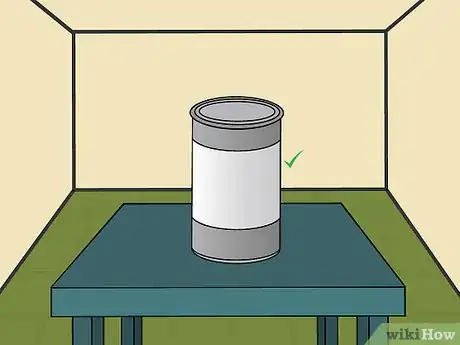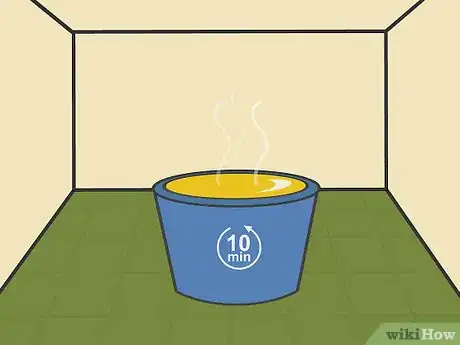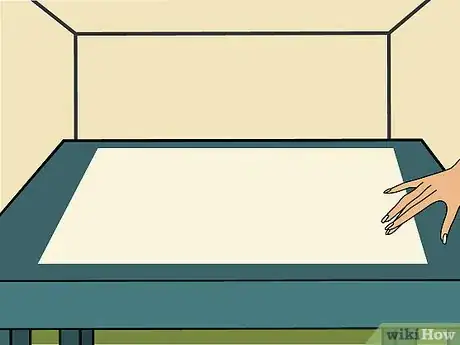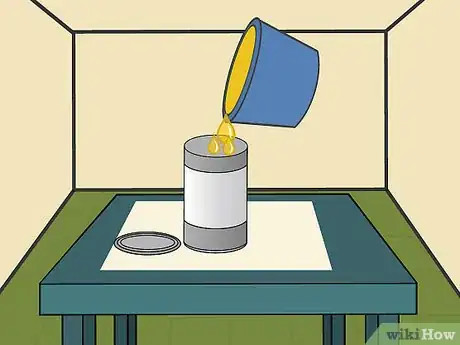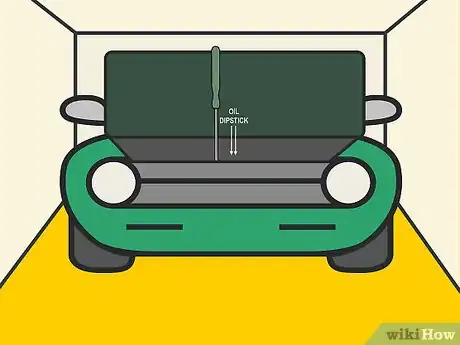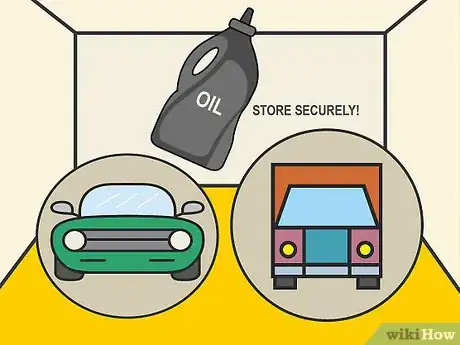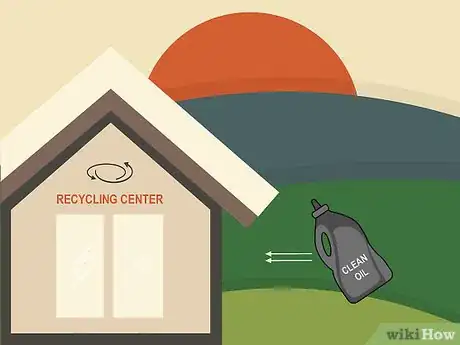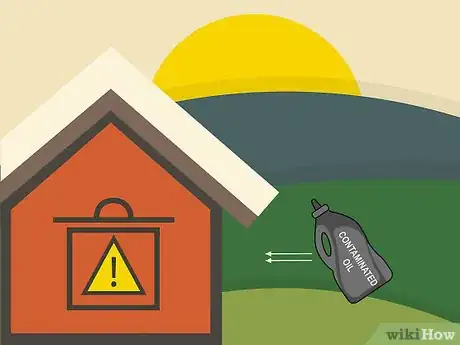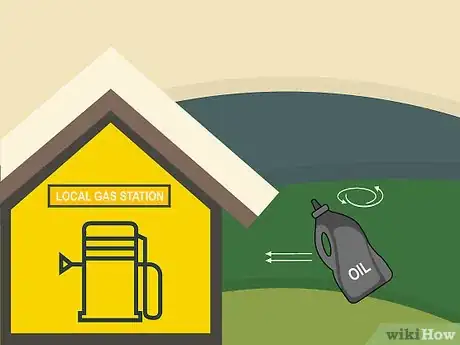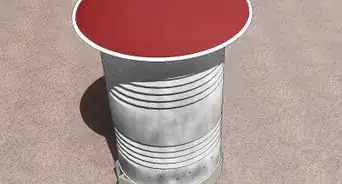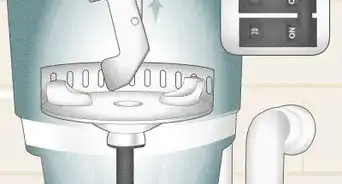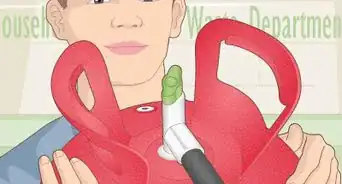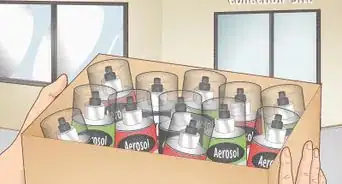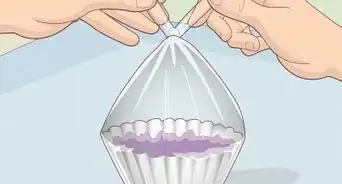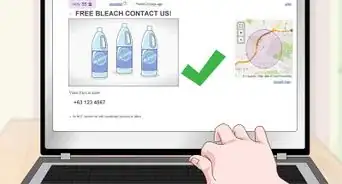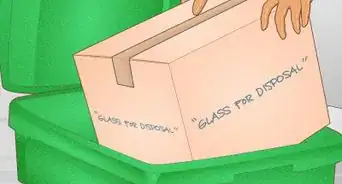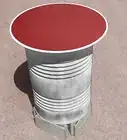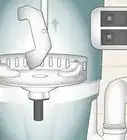This article was co-authored by wikiHow Staff. Our trained team of editors and researchers validate articles for accuracy and comprehensiveness. wikiHow's Content Management Team carefully monitors the work from our editorial staff to ensure that each article is backed by trusted research and meets our high quality standards.
This article has been viewed 47,202 times.
Learn more...
Getting rid of old motor oil can seem like a hassle, but with only a few tools you can safely and easily dispose of any extra oil and never dispose of it in the garbage or environment. Since motor oil is considered toxic waste, it's important that you dispose of it properly; never dump your oil outside, in a garbage can, or down a drain, as this can cause enormous environmental damage! In just a few minutes you can have your oil packed up and ready to bring to any number of local facilities that will help you dispose of it or repurpose it. Typically, your government will be able to direct you to a drop-off facility for hazardous waste. If you require more information, scroll down and read the steps.
Steps
Storing and Testing Your Oil
-
1Find a clean metal or plastic 1 gallon (3.8 L) jug. Be sure that you have a lid that can seal the container tightly. Avoid using milk jugs and consider reusing your original motor oil container. Never use containers that used to hold household chemicals or other automotive fluids.[1]
- Purchase 1 gallon (3.8 L) jugs from big-box stores or online suppliers.
- For smaller batches, use small polyethylene plastic lunch containers. If you have a larger batch, use a combination of larger jugs and small containers.
- Avoid mixing your oil with chemicals like solvent, paint, antifreeze, and differential oil.
-
2Cool your oil for 10 minutes before transferring it into the jug. Plastic jugs and plastic lunch containers can burst open or melt in response to hot oil. Let the catch pan—the container that you drain your oil into—sit for about 10 minutes in a cool area. If it's a particularly hot day, consider letting the oil cool for even longer.[2]
- Hold your hand carefully above the oil to feel the heat and determine if it's still hot.
Advertisement -
3Lay a piece of cardboard and newspaper down on a flat surface. Before transferring your oil, place a piece of cardboard down onto a flat surface. Afterward, line the top with a thick layer of newspaper. Ideally, do this in your garage or another area that you don't mind getting messy.[3]
- Don't create your pouring area outside to avoid contaminating your yard or the surrounding public property.
-
4Pour your motor oil into the jug. After changing your vehicle's oil, you're left with a catch pan full of old motor oil. Place your container onto a flat surface. Hold the funnel in place with one hand and gently pour the oil through the funnel with the other. Be sure to hold the funnel and container steady. Afterward, screw the cap on tight.[4]
- Use a drain pan with a pour spout if possible.
- If you have a drain pan with a sealable lid, take it right to a drain station.
-
5Test for oil contamination using a dipstick. Open the hood of your vehicle and pull out the dipstick. The vehicle's dipstick is typically a yellow ring that is inserted into the engine oil compartment on your engine. Pull it out, wipe it with a clean cloth, and then dip it into your old motor oil. Remove it and wipe it onto a clean white cloth. Observe the oil for signs of contamination.[5]
- Quality oil is transparent or honey-like in color with no sediments and a greasy viscosity.
- Mildly contaminated oil is translucent or dark-brown with bits of sediment and sludge.
- Contaminated oil is dark black and murky with lots of sediment and sludge.
Throwing out Old Oil
-
1Store your jug of oil securely in your car or truck. If you have a truck, place the jug in the bed. For cars, place it in the floor pan of the passenger side. Regardless of where you store your oil, make sure it's secure. Place it in between heavy objects to keep it in place. If you have tie-downs, wrap them around the container and secure their hooks to the loops on the side of the car.[6]
- Trucks typically have tie-down loops on the edges of their bed. Cars usually have smaller loops in the interior along the upper and bottom edges, where the frame meets the doors.
- Drive gently to and be careful when making sharp turns.
- Don't place your oil jug in the trunk—it's likely to roll or tip over.
-
2Drop your motor oil off at a recycling center if it's clean. For those in the United states, find collections centers near you using Earth911 (https://earth911.com/). In the "Where to Recycle" section, enter "motor oil" and add your ZIP code. Find a location close to you and plan your trip.[7]
- Call potential centers and ask them what the requirements are for accepting oil. If you don't meet them, consider a waste disposal center.
-
3Bring your oil to a toxic waste disposal center if it's contaminated. If your oil is in a dirty container and contaminated with other substances, take it to a toxic waste disposal center in your area. Contact your municipality and ask about the disposal centers closest to you.[8]
- Never throw your oil in the garbage—this is illegal in most parts of the world and causes enormous environmental issues.
- For United States residents, use the search function here: https://www3.epa.gov/enviro/facts/rcrainfo/search.html.
Delivering Your Oil to Be Repurposed
-
1Visit motor oil suppliers and ask for collection site locations. In some states, such as Minnesota, all motor oil suppliers are legally required to post listings of used oil collection sites or a toll-free number with the relevant information. Regardless of the laws, most suppliers will be able to help you out.[9]
- Ask each supplier what their requirements are for oil recycling. For example, ask if they will accept mildly contaminated oil.
-
2Recycle your old oil at a local gas station. Visit local gas stations and ask about oil recycling services. Many accept old oil for free, while others charge a fee. Check the fees for the gas stations in your area and find the most reasonable price.
- You can call ahead to ask the gas stations if they repurpose oil. Remember to ask them what their requirements are in terms of oil quality.
-
3Ask car repair shops and commercial businesses if they need oil. Many repair shops and businesses that use oil-fired stoves accept oil for free. Ask local businesses you think might fall into this category—it's free heat for them! Be sure to ask them how much they are willing to take so you know for future reference.[10]
- Consider keeping your oil in 5 to 8 gallons (19 to 30 L) jugs if you find a business that needs a regular supply of oil.
Things You'll Need
- Drain pan
- Metal or plastic 1 gallon (3.8 L) jug
- Funnel
- Newspaper
- Cardboard
Warnings
- Never dump motor oil onto the ground, flush it down the drain, or throw it into a regular garbage can. It's considered a major toxic pollutant, and it's important to dispose of it properly.⧼thumbs_response⧽
References
- ↑ https://mobiloil.com/en/article/car-maintenance/used-motor-oil-recycling/used-motor-oil-recycling
- ↑ https://www.motorists.org/blog/how-to-properly-dispose-of-used-motor-oil/
- ↑ https://www.pca.state.mn.us/living-green/changing-your-oil-earth-friendly-guide-do-it-yourselfers
- ↑ https://www.motorists.org/blog/how-to-properly-dispose-of-used-motor-oil/
- ↑ https://www.machinerylubrication.com/Read/541/dipstick-oil-analysis
- ↑ https://www.motorists.org/blog/how-to-properly-dispose-of-used-motor-oil
- ↑ https://earth911.com/
- ↑ https://www.pca.state.mn.us/living-green/changing-your-oil-earth-friendly-guide-do-it-yourselfers
- ↑ https://www.pca.state.mn.us/living-green/changing-your-oil-earth-friendly-guide-do-it-yourselfers
